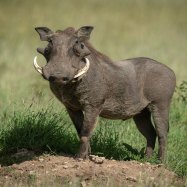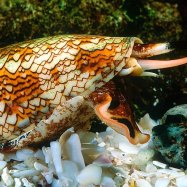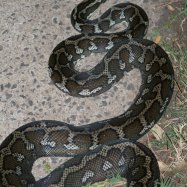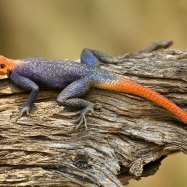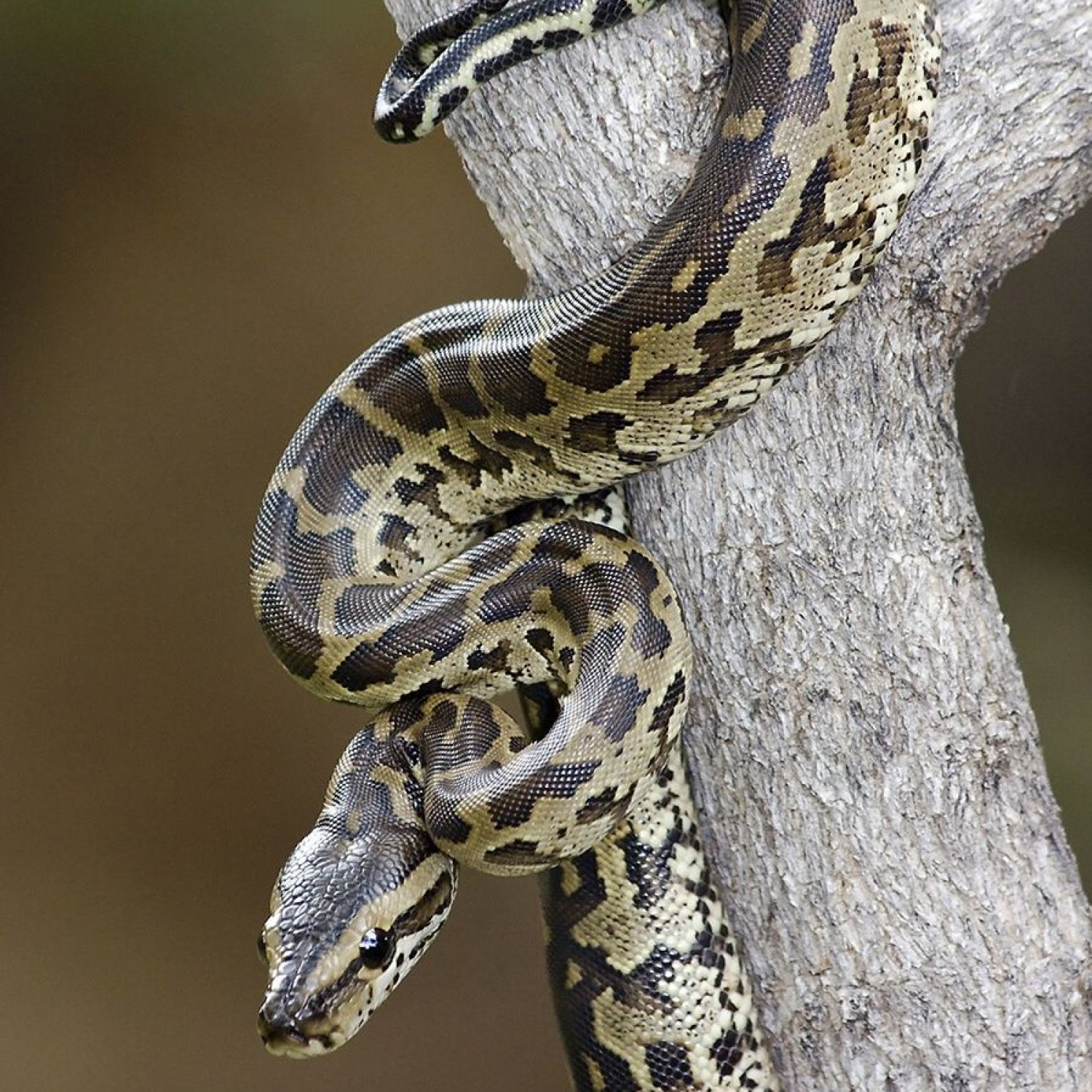
Rock Python
Up to 6 meters (20 feet)
. The Rock Python, found in Africa, is a massive snake that can grow up to 6 meters in length. Belonging to the Pythonidae family, they have a cylindrical and elongated body shape. Despite their size, they are not venomous and feed on small mammals and birds. They are also known for their unique hunting method, constricting their prey to suffocate them. Next time you're on an African safari, keep an eye out for this impressive animal. #RockPython #AfricaWildlife #Pythonidae
Animal Details Summary:
Common Name: Rock Python
Kingdom: Animalia
Habitat: Rocky areas, savannas, grasslands, forests
The Magnificent and Mighty Rock Python: A Look Into Africa's Largest Snake
In the savannas and grasslands of Sub-Saharan Africa, a powerful predator slithers through rocky terrains and dense forests. With its sleek body and striking coloration, the Rock Python, scientifically known as Python sebae, commands respect in its natural habitat. From its physical attributes to its hunting technique, this majestic snake truly lives up to its nickname, the "lion of the snake world." Let's take a closer look at this remarkable creature and discover what makes the Rock Python a true marvel of nature Rock Python.An Animal of Many Names
The Rock Python is one of the most widely recognized and feared snakes in Africa, and for a good reason. Its reputation precedes it, earning it various names in different parts of the world. Apart from its scientific name, it is also known as the African Rock Python, the Natal Python, or simply, the Rock Python. It is quite a fitting name for this enormous reptile that thrives in rocky areas, among other habitats.
A Member of the Animal Kingdom's Elite
Belonging to the kingdom Animalia, the Rock Python is part of the Phylum Chordata, which includes all animals with a backbone or spinal cord. It also falls under the Reptilia Class, home to all reptiles such as crocodiles, turtles, and lizards. In particular, the Rock Python belongs to the Order Squamata, which includes all scaled reptiles like snakes and lizards. Its family, Pythonidae, includes some of the largest species of snakes in the world, making it part of a truly elite group in the animal kingdom.
A Vast Habitat Fit for a Mighty Predator
The Rock Python is a versatile creature, which is why it thrives in a wide range of habitats, from rocky areas and savannas to grasslands and forests Russell Terrier. This adaptability allows the snake to inhabit a large geographical distribution, mainly in Sub-Saharan Africa, where it can be seen in countries such as Nigeria, Ghana, Cameroon, and Uganda. Its natural habitat is mostly found in central and western Africa, but due to its size and adaptability, it can also be found in southern Africa.
Hunting Like a True Predator
As a carnivore, the Rock Python feeds on a variety of prey, including small and medium-sized mammals like rodents, antelopes, and monkeys. Unlike some snakes that rely on venom, the Rock Python is a constrictor, meaning it suffocates its prey by coiling its muscular body around it until it dies. It then swallows the whole animal, headfirst, using powerful muscles to push it down its gullet. It may take several days for the snake to digest its meal, keeping it relatively inactive during this process.
Exploring Africa's Biggest Snake
As the largest snake in Africa, the Rock Python boasts an impressive body size, with some specimens reaching up to a whopping 6 meters or 20 feet in length. In fact, it is the longest snake found on the continent, rivaled only by the Green Anaconda, found in South America. Its cylindrical and elongated body shape allows the Rock Python to move gracefully through its habitat, whether on the ground or in the water.
A Beauty of Many Colors
At first glance, one may mistake the Rock Python for being "just another snake." But a closer look reveals a captivating beauty in its coloration. The snake sports a dark brown to olive base color, with black or dark brown blotches along its body. These blotches vary in shape and size, giving each snake a unique pattern that helps it blend in with its surrounding environment. This coloration serves as camouflage, making it difficult for predators and prey to spot the Rock Python in its habitat.
Risk of Extinction and Human Interactions
While the Rock Python is not currently listed as an endangered species, it still faces threats to its survival. Deforestation, habitat loss, and hunting are some of the primary reasons for the decline in its population. Furthermore, human interactions with the snake often result in conflict, leading to the killing of these majestic creatures. It is essential to spread awareness about the vital role the Rock Python plays in its ecosystem and take steps to protect it from extinction.
In conclusion, the Rock Python is a magnificent and mighty snake that deserves recognition and admiration. From its physical traits to its hunting technique, it is a true marvel of nature. But beyond its awe-inspiring appearance, the snake also serves an essential role in its ecosystem, making it a vital part of Africa's biodiversity. Let us continue to appreciate and protect this majestic creature and allow it to thrive in its natural habitat.

Rock Python
Animal Details Rock Python - Scientific Name: Python sebae
- Category: Animals R
- Scientific Name: Python sebae
- Common Name: Rock Python
- Kingdom: Animalia
- Phylum: Chordata
- Class: Reptilia
- Order: Squamata
- Family: Pythonidae
- Habitat: Rocky areas, savannas, grasslands, forests
- Feeding Method: Carnivorous
- Geographical Distribution: Sub-Saharan Africa
- Country of Origin: Nigeria
- Location: Africa
- Animal Coloration: Dark brown to olive or yellowish with black or dark brown blotches
- Body Shape: Cylindrical and elongated
- Length: Up to 6 meters (20 feet)
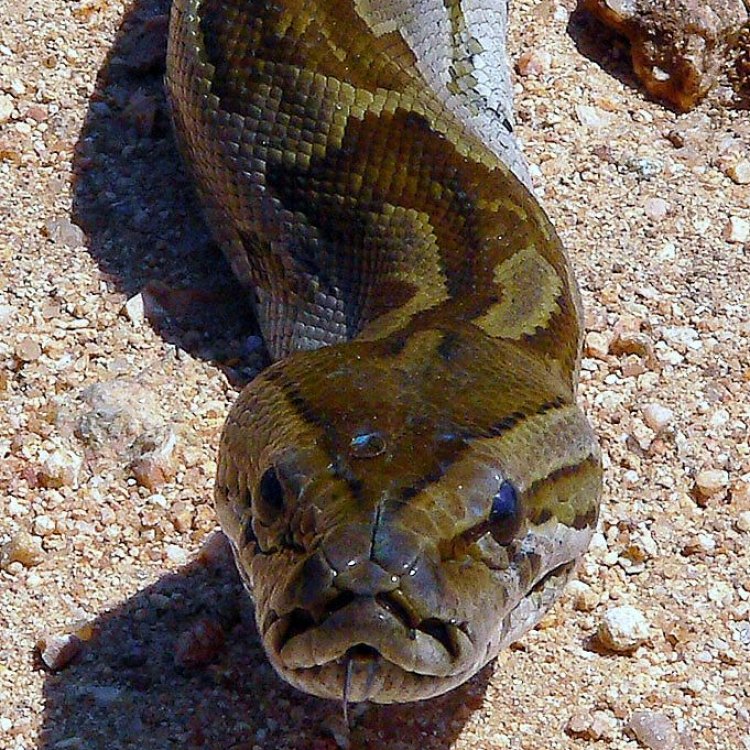
Rock Python
- Adult Size: 4-6 meters (13-20 feet)
- Average Lifespan: 20-30 years
- Reproduction: Sexual
- Reproductive Behavior: Mating occurs from September to November. Females lay 20-100 eggs, which hatch after an incubation period of 2-3 months.
- Sound or Call: Hissing, hissing growl, and rattling sound
- Migration Pattern: Non-migratory
- Social Groups: Solitary, but occasionally seen in pairs or small groups
- Behavior: Nocturnal, ambush predator
- Threats: Habitat loss, hunting for their skin and meat
- Conservation Status: Least Concern
- Impact on Ecosystem: Top predator, helps control rodent populations
- Human Use: Hunted for their skin and meat
- Distinctive Features: Large size, powerful constricting ability
- Interesting Facts: Rock pythons are among the largest snake species in the world. They have been known to prey on antelopes and other large mammals. The skin of the rock python is highly valued in the fashion industry.
- Predator: Humans, crocodiles
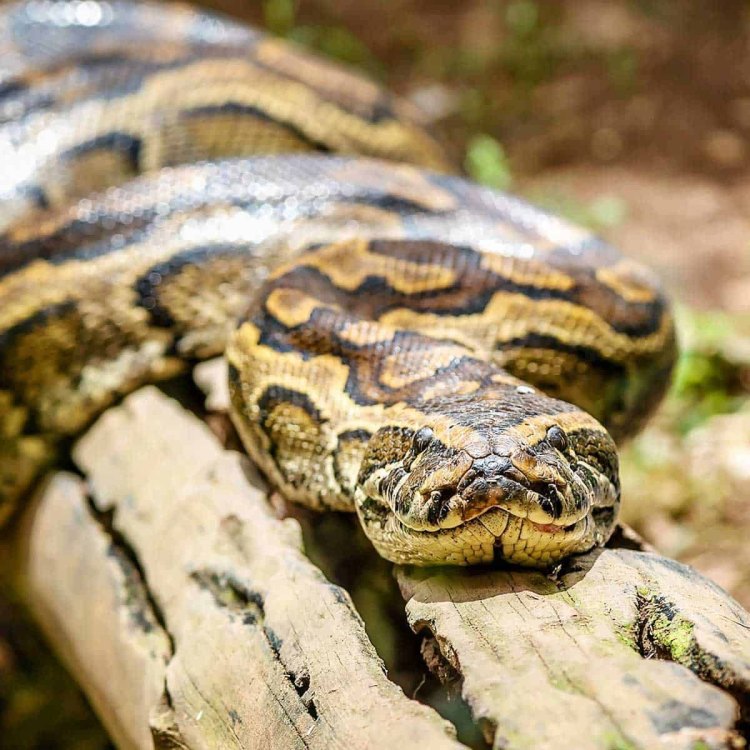
Python sebae
The Mighty Rock Python: Behold the Giant Serpent of the Savanna
In the vast savannas of Africa, a fearsome predator lurks in the shadows, its powerful coils and hissing growls instilling fear in the hearts of its prey. This predator is none other than the rock python, one of the largest snake species in the world. With an adult size averaging 4-6 meters (13-20 feet) and an average lifespan of 20-30 years, the rock python is a formidable force in its ecosystem.The rock python, scientifically known as Python sebae, is found throughout sub-Saharan Africa, ranging from Senegal to Ethiopia and down to South Africa PeaceOfAnimals.Com. Its name comes from its preferred habitat, which is rocky areas with crevices and holes for hiding and basking in the sun. They are also found in grasslands, savannas, and open woodland areas.
One of the most fascinating aspects of the rock python is its unique reproductive behavior. Like most snakes, they reproduce sexually, with mating occurring from September to November. During this time, the males engage in fierce battles to win over a female. Once the mating is complete, the female lays 20-100 eggs, which she protects and incubates for 2-3 months. Unlike other species of snakes, the rock python does not abandon its eggs but instead curls around them and shivers to generate warmth for incubation.
The rock python may not be the most vocal of creatures, but it does have a unique array of sounds that it uses for communication and defense. These include hissing, hissing growls, and a rattling sound produced by vibrating its tail against the ground Raccoon. Interestingly, these sounds are often mistaken for those of venomous snakes, causing people to fear the rock python and perceive it as a threat.
In terms of its migration patterns, the rock python is a non-migratory species. It prefers to stay within its home range, which can cover up to several square miles. However, it is not unusual to see them traveling short distances to find food or a suitable mate.
The rock python is a solitary creature, but it can occasionally be seen in pairs or small groups. They are nocturnal, meaning they are most active at night, and they use their impressive camouflage to hide and ambush their prey. As an ambush predator, the rock python has a diverse diet that includes mammals, birds, and reptiles. They have even been known to prey on large antelopes and crocodiles.
Despite their size and fearsome reputation, rock pythons are not considered a threat to humans. In fact, they play an essential role in maintaining the delicate balance of their ecosystem. As top predators, they help to control rodent populations, which can quickly spiral out of control if left unchecked.
Unfortunately, the rock python faces numerous threats, including habitat loss and fragmentation due to human activities. They are also hunted for their skin, which is highly valued in the fashion industry, and their meat, considered a delicacy in some African cultures. As a result, they are listed as a Least Concern species on the IUCN Red List, but their populations are declining.
Aside from their crucial role in their ecosystem, rock pythons are also vital to the local communities and have been used by humans for centuries. In some parts of Africa, they are revered as sacred creatures, and their skin is believed to have medicinal properties. However, overhunting has led to a decline in their population, and strict conservation efforts are needed to ensure their survival.
One of the most distinctive features of the rock python is, without a doubt, its large size. They are among the largest snake species in the world, and their powerful constricting ability makes them formidable predators. But their size is not just for show; it serves a purpose in their environment. Their massive bodies help them to regulate their body temperature, and their impressive strength allows them to take down prey much larger than themselves.
Despite their size, rock pythons are not invincible. They have their own natural predators, including crocodiles and, unfortunately, humans. However, with proper education and conservation efforts, we can coexist with these magnificent creatures and ensure their survival for future generations.
In conclusion, the rock python is a truly remarkable species, with its unique reproductive behavior, fascinating vocalizations, and impressive size. As top predators, they play a crucial role in their ecosystem, and their conservation is essential to maintain the delicate balance of their environment. We must recognize the importance of protecting and respecting these creatures to ensure their survival in the wild. So, the next time you hear a hissing growl coming from the shadows of the African savanna, remember to admire and appreciate the mighty rock python.
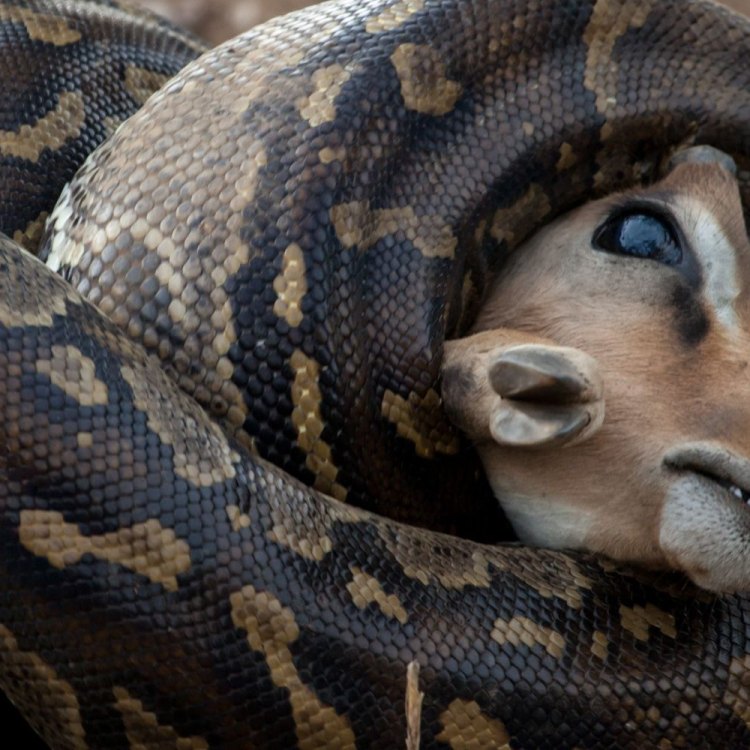
The Magnificent and Mighty Rock Python: A Look Into Africa's Largest Snake
Disclaimer: The content provided is for informational purposes only. We cannot guarantee the accuracy of the information on this page 100%. All information provided here may change without prior notice.


